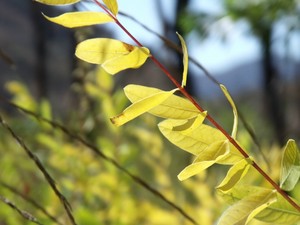Dwarf willow trees are planted for a number of reasons. They are a graceful focal point in home landscapes. Some people plant them as a living fence while others use them to help control soil erosion. Whatever your reason is for planting them, they are a wonderful tree to grow if you have a site that stays constantly moist, or floods on occasion.
The dwarf willow tree can grow to heights of 6 to 10 feet. In the spring, the branches look lime green, but as the season progresses, the color changes to a dark green.
If you bought a dwarf willow, you will need to plant it in the ground. If you want the best color show from your dwarf willow, plant it in an area that receives the full sun exposure. If you don’t have a sunny location, you can plant it in a location that has part sun or part shade.
Prepare the Holes
Remove the grass, weeds and other vegetation in the area. When you dig your hole, make them three times as wide and three times as deep as the dwarf willow’s container. Use the edge of your spade or shovel to scuff the sides and bottom of the planting hole.
With your water hose, fill the planting hole with water. Allow the water to drain away naturally. This gives the area ample moisture down deep for the dwarf willow to grow.
Amend the Soil
Add 3 to 4 inches of well-rotted compost to the soil you removed from the hole. Mix to combine. When all the water has drained out of the hole, fill the hole two-thirds full with the amended soil.
Preparing the Root Ball of the Dwarf Willow
Remove one dwarf willow tree from its container. When you take the tree out of the container, loosen up the sides of the root ball with your fingers. Try to keep the root ball intact. If the roots are showing, gently tease them away from the sides of the root ball with your fingers. If you leave the roots growing this way, they will continue to grow around the root ball, slowly choking your tree to death.
Planting the Dwarf Willow
Insert the dwarf willow’s root ball in the center of the planting hole. Check to make sure that the top of the root ball is about 1/ 4 inch above the ground level. The soil below the root ball will settle and the rootball will be ground level in a short time.
Push the amended soil in around the root ball. When the soil is half way up the root ball, firm the soil in place to remove air pockets. Finish filling in the planting hole. Firm the soil down again with your hands or feet.
Water the Willow
Give the newly planted willow a good drink of water. Each week, provide an inch of water for your willow. When you water, allow the water to run on a slow flow and water it deeply. The soil needs to be kept moist, but never soggy, unless there is a flood in your area.
Mulch and Fertilizer
Put a 2 to 4-inch layer of organic mulch around the dwarf willow. Do not place the mulch up close to the trunk of the tree or disease could set in. Keep the mulch 1.5 to 2 inches away from the trunk.
Early in the spring, feed your dwarf willow. Use an all-purpose fertilizer before the willow begins to grow. Always mix and follow the label directions on the brand of fertilizer you choose.
Sources:
“American Horticultural Society A to Z Encyclopedia of Garden Plants”; Christopher Brickell; 2004
Reference:
- plants.usda.gov/factsheet/pdf/fs_saco28.pdf
- www.midwestgardentips.com/hakuro-nishiki_dappled_willow.html
